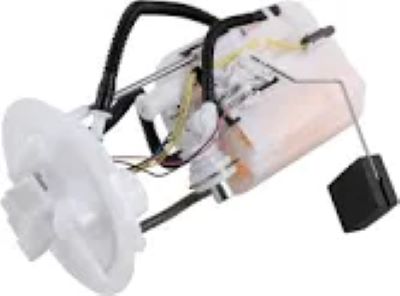Fuel pumps are a key contributor to the emissions of a vehicle since it manages the amount of fuel that passes through the engine, which in turn controls combustion. This is why the fuel pump as seen in modern fuel-injected vehicles operates near 40-70 PSI to provide this required pressure for a correct air-fuel ratio. This balance is a delicate one, and when off even slightly, due to too little air being available for combustion, the result is incomplete combustion creating waste products CO (carbon monoxide) and NOx (nitrogen oxides). The EPA says that even a small change in the air-fuel ratio can result in an increase of 10-20% in vehicle emissions, which means decreased air quality and environmental pollution.
As per automotive regulations (Euro 6) open skeleton vehicles should not emit more than 0.08 grams of NOx for every kilometer. Key to achieving these low emissions levels is the need for the fuel pump to maintain precise pressure and delivery of fuel. As an example, Bosch produces fuel pumps for a leader in automotive parts Tested reduce emissions more than 15%. The same amount is saved on the cost of gas that never before!
The 1980s were a crucial era in the quest to tame vehicle emissions, and emergence of electric fuel pumps certainly helped. This eliminated the prior inconsistency of low fuel pressure for carbureted engines, which often resulted in poor combustion characterics and high emissions. This was possible in large part due to the changeover from carburetion to electronic fuel injection (EFI), accompanied by electric pumps, that enabled engine manufacturers such as Ford and Toyota to build engines with much more power and cleaner running -- about a 10% decrease in CO2 emissions per vehicle, as reflected in fleet-wide averages.

Peter Drucker said it best: “If you can't measure it, you can't improve it,” and nowhere does that apply more than in how fuel pumps change emissions from your vehicle. One key reason to measure fuel pump performance is so that vehicles can meet some strict emissions regulations, and many countries — such as the U.S., which fines you or won't let you renew a registration if your car fails an emissions test – are making those limits even stricter. Fuel pumps need to deliver the proper pressure and flow, usually in liters-per-hour (LPH) for correct combustion and reduced emissions. For instance, a deteriorating pump allows erratic delivery of fuel causing HC to skyrocket in extreme cases (up to 50%), resulting in failed emissions tests– and expensive repairs.
In relation to hybrid and electric vehicles, improved fuel pump technology also plays an continued role in emissions control. The use of electric fuel pumps in internal combustion–range extending hybrid systems also play a part in efficiency and emission reduction, [adding cuts all.] to help realize the lower emissions status quo these vehicles would be expected to maintain. The Prius by Toyota on the other hand benefits from groundbreaking fuel pump technology that suits the hybrid efficiency of the automobile which result to emissions being barely half that released by conventional gasoline engines.
One of the key components for lower emissions is a functioning fuel pump. After all a fuel pump failure means rich running conditions which in turn will lead to to much fuel inside the combustion chamber. Aside from adversely affecting fuel economy, this condition also increases emissions, particularly unburned hydrocarbons--one of the biggest pollutants at engine warm-up.-- which are emitted.raw oil is climbing to its highest level in a decade. To learn more about the Fuel Pump and its role in emission control, simply follow the link.